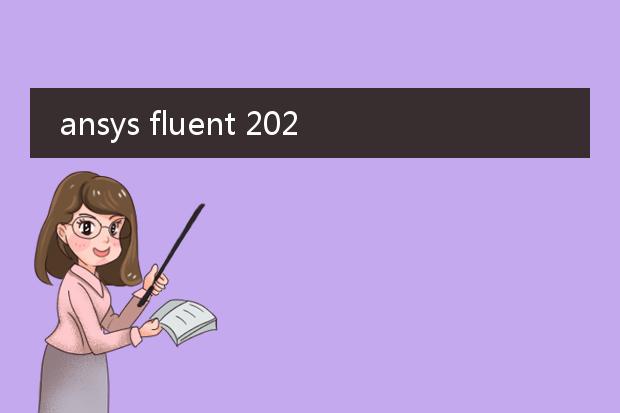2025-01-03 02:31:28

# 《ansys fluent 2020工程案例详解
pdf:开启高效工程模拟之旅》
ansys fluent 2020工程案例详解pdf具有极高的实用价值。它涵盖众多领域的工程案例,例如流体力学中的管道流动。在案例中,详细展示了如何建立几何模型,从实际工程结构精确转化。接着阐述网格划分策略,不同的网格类型及其对结果精度和计算资源的影响。
对于物理模型的设置,如湍流模型的选择依据,边界条件的确定等内容也深入剖析。而且,通过结果分析部分,能直观看到如何解读速度场、压力场等数据。这个pdf为工程师提供了从模型建立到结果分析的完整流程参考,有助于提高使用ansys fluent 2020解决工程问题的能力。
ansys fluent tutorial

**title: an introduction to
ansys fluent tutorial**
ansys fluent is a powerful computational fluid dynamics (cfd) software. fluent tutorials play a crucial role in helping users master this complex tool.
these tutorials typically start with basic concepts such as setting up the geometry. users learn how to import or create models relevant to fluid flow problems. next, defining the boundary conditions is covered. it's essential to accurately specify inlets, outlets, and walls. mesh generation is another key aspect. tutorials guide users on creating appropriate meshes for different geometries to ensure accurate simulations.
moreover, the tutorials also delve into setting up the physical models, like turbulence models. they then show how to run the simulations and interpret the results, which include flow patterns, pressure distributions, and velocity profiles. overall, fluent tutorials are the stepping stones for engineers and researchers to effectively utilize ansys fluent for cfd analysis.
ansys fluent tutorial guide

**title:
ansys fluent tutorial guide: a brief introduction**
ansys fluent is a powerful computational fluid dynamics (cfd) software. a tutorial guide for ansys fluent is essential for both beginners and those looking to expand their skills.
for beginners, it starts with understanding the interface. tutorials typically cover importing geometries, whether created within ansys or imported from external cad software. mesh generation is another key area, as the quality of the mesh greatly affects the accuracy of results.
the guide also delves into setting up boundary conditions, which define how the fluid interacts with the model's surfaces. solver settings, such as choosing the appropriate turbulence model, are crucial steps. finally, post - processing is covered, enabling users to visualize and analyze results like flow patterns, pressure distributions, and velocities. these tutorial guides serve as a stepping - stone to mastering ansys fluent for various engineering applications.

《ansys workbench fluent案例:圆柱绕流分析》
在工程领域,ansys workbench fluent有着广泛应用。以圆柱绕流案例来说,首先在workbench中建立几何模型,一个简单的圆柱置于流场域中。
接着进行网格划分,对于圆柱周围进行加密处理,以准确捕捉流场的变化。然后进入fluent设置,定义流体属性,如密度、粘度等。设定入口速度边界条件和出口压力边界条件。
求解后得到的结果极具价值。可以观察到圆柱周围的流线分布,在圆柱后部形成的卡门涡街现象清晰可见。通过压力云图能够分析圆柱表面的压力变化情况。这个案例展示了ansys workbench fluent在流体动力学分析中的高效性,有助于工程师理解类似物理现象并进行相关工程设计优化。




